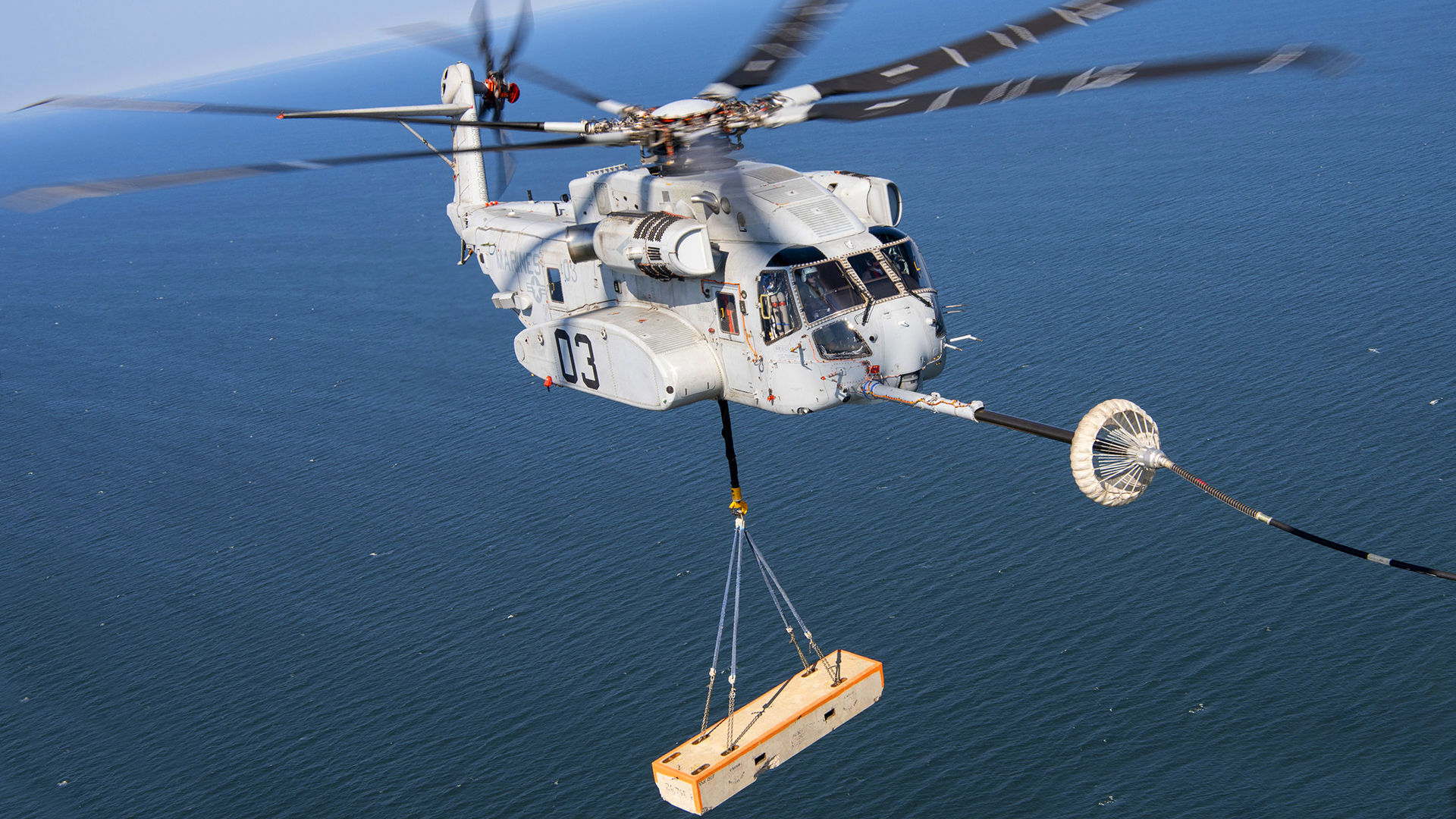The CH-53K King Stallion, the largest single-main-rotor helicopter in the U.S. military arsenal, is now operational, the Marine Corps announced on April 25.
U.S. Marine Corps Deputy Commandant for Aviation Lt. Gen. Mark Wise made it official on Tuesday, saying the CH-53K reached initial operational capability (IOC). Marine Heavy Helicopter Squadron (HMH) 461 made history by putting the type into service. Sikorsky, by way of Lockheed Martin, followed up with a tweet:
“My full confidence in the CH-53K’s ability to execute the heavy-lift mission is the result of successful developmental and operational testing conducted by Air Test and Evaluation Squadron (HX) 21 and Marine Operational Test and Evaluation Squadron (VMX) 1,” said Wise.
On its way to achieving its IOC criteria, the CH-53K successfully completed a thorough initial operational test and evaluation period that resulted in over 3,000 mishap-free hours flown in various challenging environments and terrain.
Despite more than a few hurdles along the way, the CH-53K King Stallion is now moving closer to meaningful operational service with the U.S. Marine Corps.
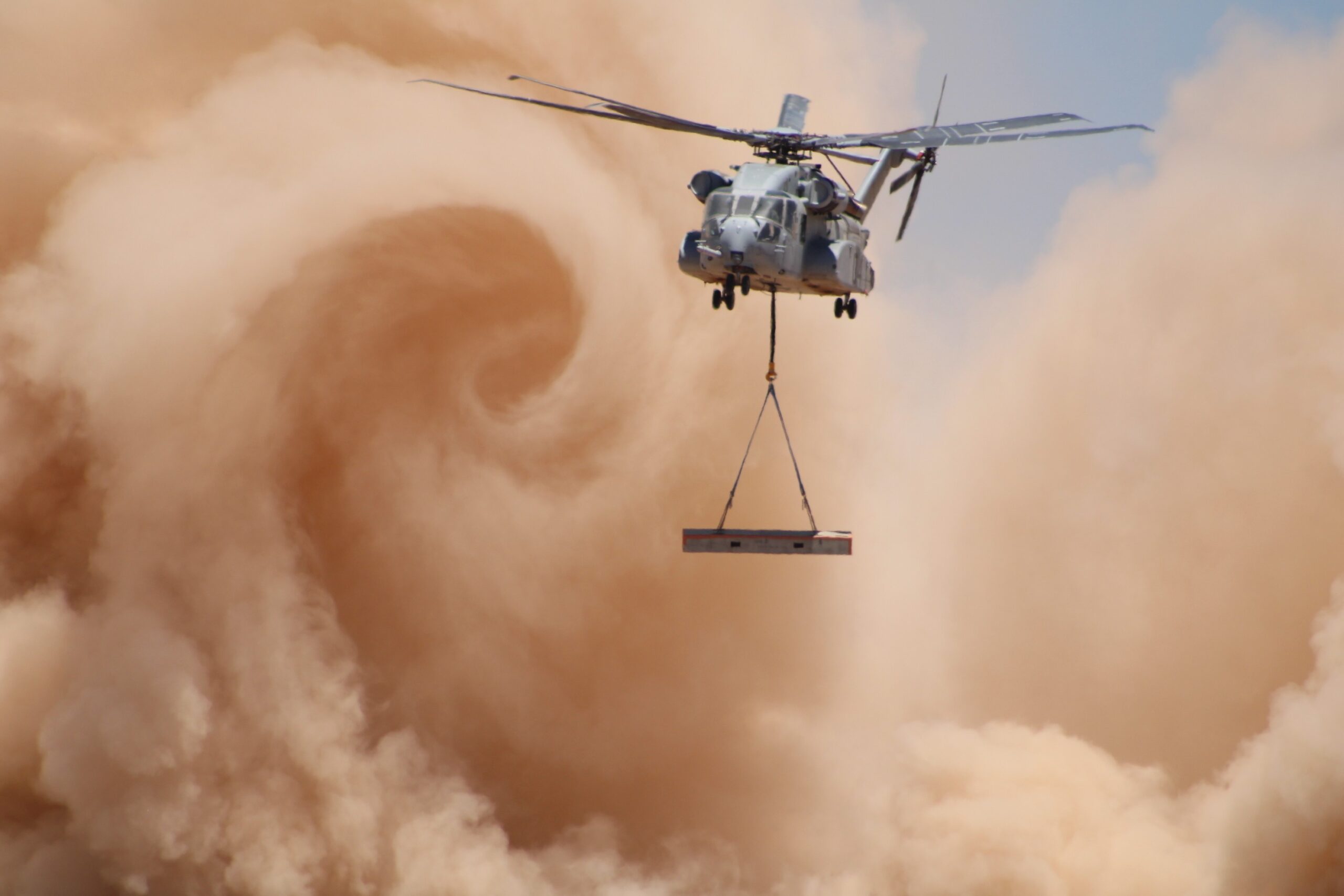
Noticeable in the video are the large exhaust elbows aft of the helicopter’s three engines. The helicopter had problems re-ingesting its own hot exhaust, which caused the engines to overheat. Sikorsky and the Navy have since addressed that issue. The 53K has had other developmental troubles, as well, including one that required a redesign of its main rotor gearbox.
In the CH-53K, the Marine Corps wanted a heavy-lift helicopter capable of flying 110 nautical miles and could carry 27,000 pounds of cargo, three times what the 53E could haul. The CH-53K originally passed a Defense Acquisition Board assessment that approved for the aircraft to begin low-rate initial production on April 4, 2017.
Paul Lemmo, the president of Sikorsky who has overseen most of the military’s transition from the CH-53E to the K, said the Marine Corps’ adoption of the King Stallion is a “vote of confidence from leadership and demonstrates the critical role of the CH-53K, giving forces more range and agility to conduct expeditionary heavy-lift assault transport of armored vehicles, equipment, and personnel.”
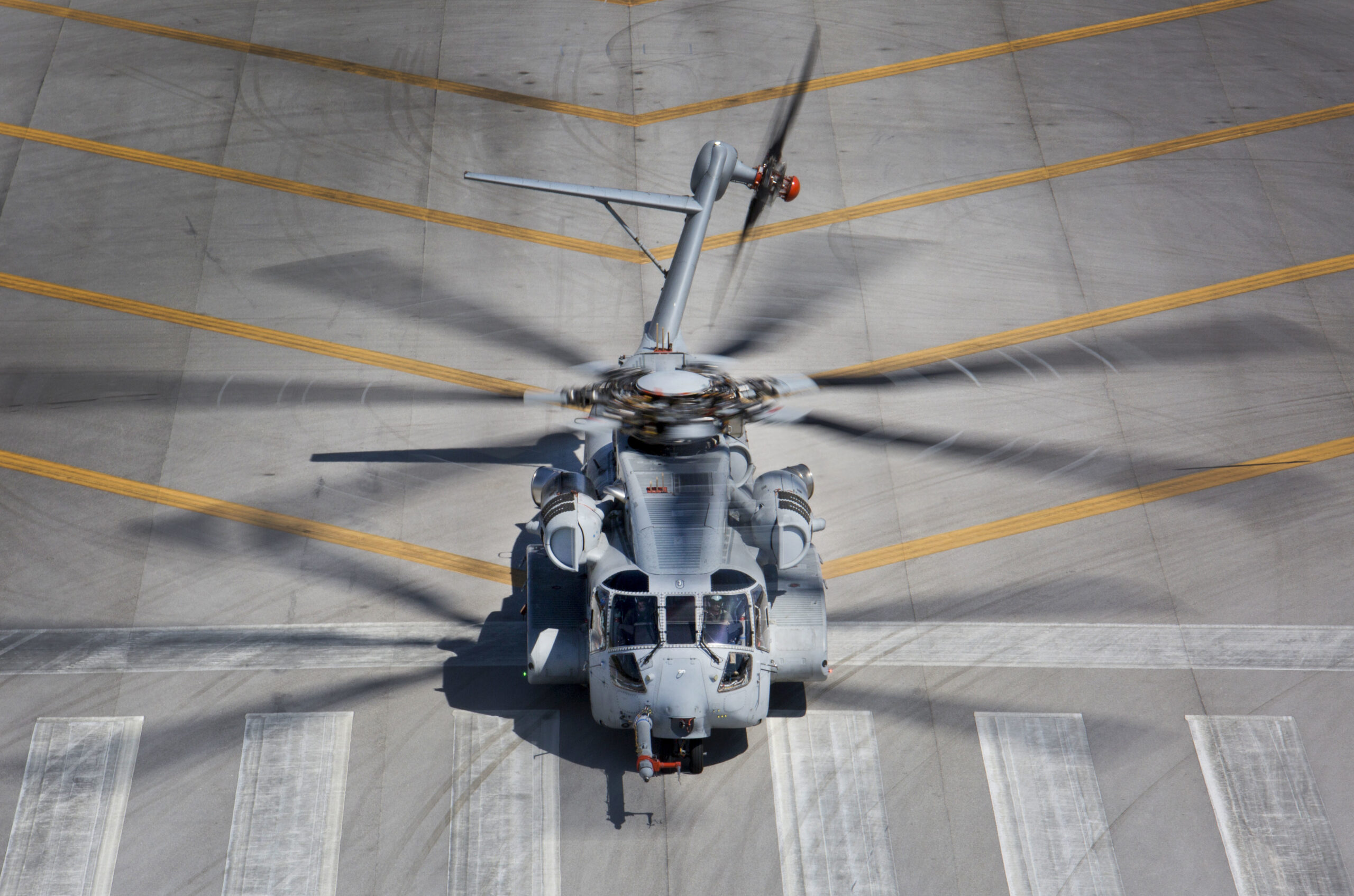
“This capability is critical in the Indo-Pacific region and around the globe in support of the joint force and allies,” Lemmo said. “Sikorsky and our nationwide CH-53K supply chain, including dozens of small businesses, are committed to delivering aircraft that can adapt to future missions and are reliable, sustainable and relevant for decades to come.”
“The success to date of the CH-53K is a reflection of the hard work and effort by the Marines, sailors, and civilians at VMX-1, H-53 Program Office (PMA-261), and Marine Heavy Helicopter Squadron (HMH) 461, and the support we have received over many years from across the Department of the Navy and our industry partners,” Wise said.
The King Stallion’s three engines give the aircraft 57 percent more horsepower with half as many parts as its predecessor, which translates to an expanded capability to deliver internal and external cargo loads, providing the commander a mobility and sustainment capability the Marine Air-Ground Task Force (MAGTF) has never had before.
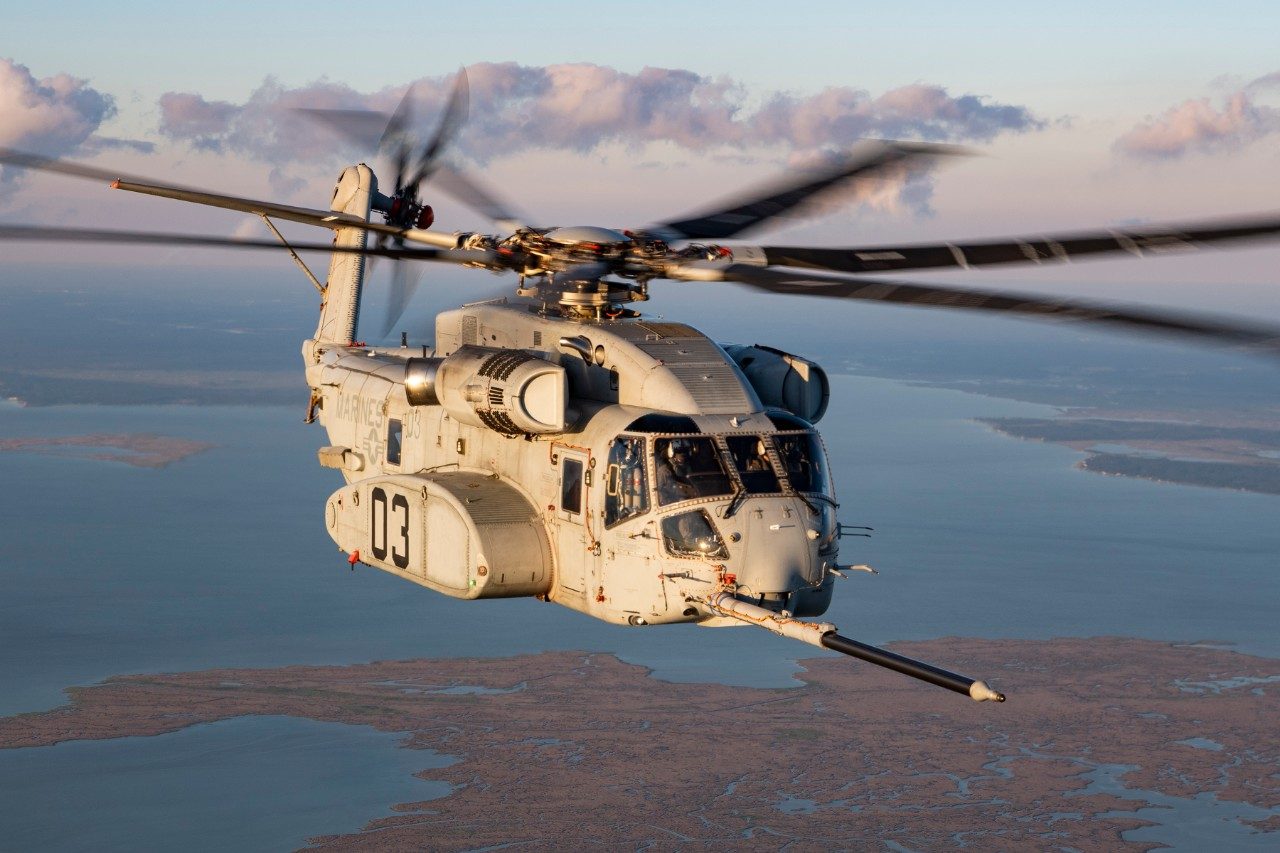
The most notable attribute of the King Stallion is its ability to maintain increased performance margins in a degraded aeronautical environment, for example at higher altitudes, hotter climates and carrying up to 27,000 pounds out to 110 nautical miles. The CH-53E would be limited to a 9,628-pound external load in the same environment.
Plans are for the Marine Corps to deploy the first CH-53K Marine Expeditionary Unit (MEU) detachment in fiscal year 2024.
The King Stallion only last year recorded its first official fleet mission, completing the real-world retrieval of another helicopter from a mountain ridge, and marking a significant step forward for the program.
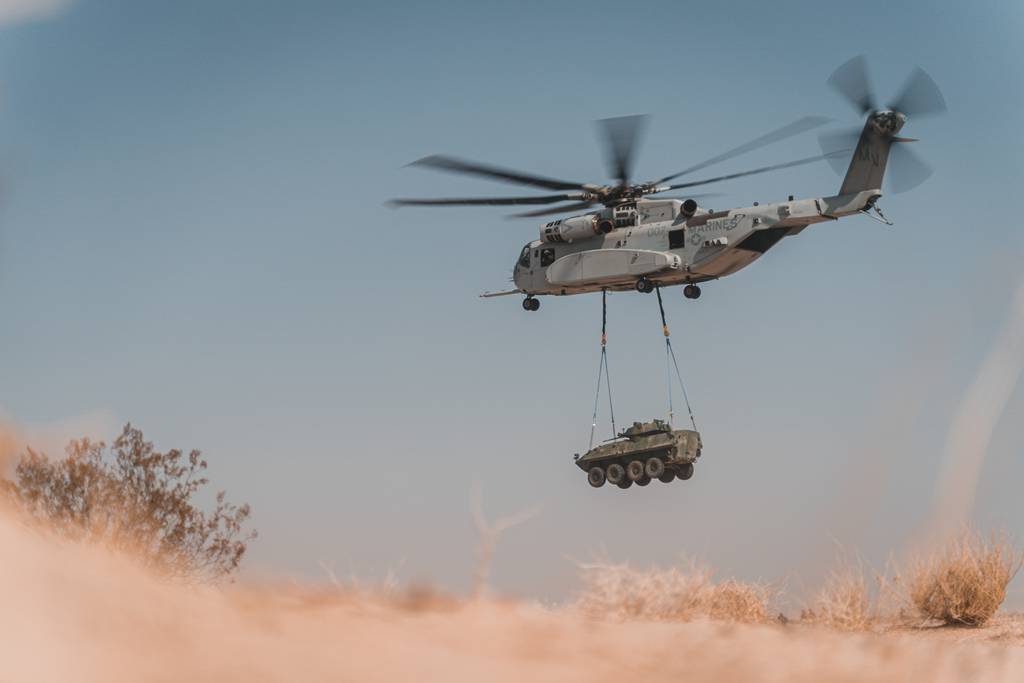
The King Stallion was assigned the recovery of a U.S. Navy MH-60S Seahawk helicopter that made a hard landing on a high-altitude ridge amid rugged terrain on Mount Hogue, near Bishop, California, close to the Nevada border. The Seahawk, assigned to the Naval Air Station Fallon Base Flight, at the Nevada base, had come down during a search-and-rescue operation for a lost hiker on July 16. No injuries were reported to its four crew, who were rescued the following day.
Sikorsky had been pushing for the CH-53K to replace heavy-lift aircraft in both Germany and Israel, the latter of which became the type’s first export order. Israel chose the 53K over Boeing’s CH-47 Chinook to replace its aging fleet of legacy S-65/CH-53 ‘Yasur’ Sea Stallion helicopters in February of this year. Germany was interested in both helicopters, decided they were both too expensive, passed on both, and then revisited the effort to replace its legacy CH-53G helicopters. It was recently reported that they would be buying the CH-47 Chinook instead of the CH-53K.
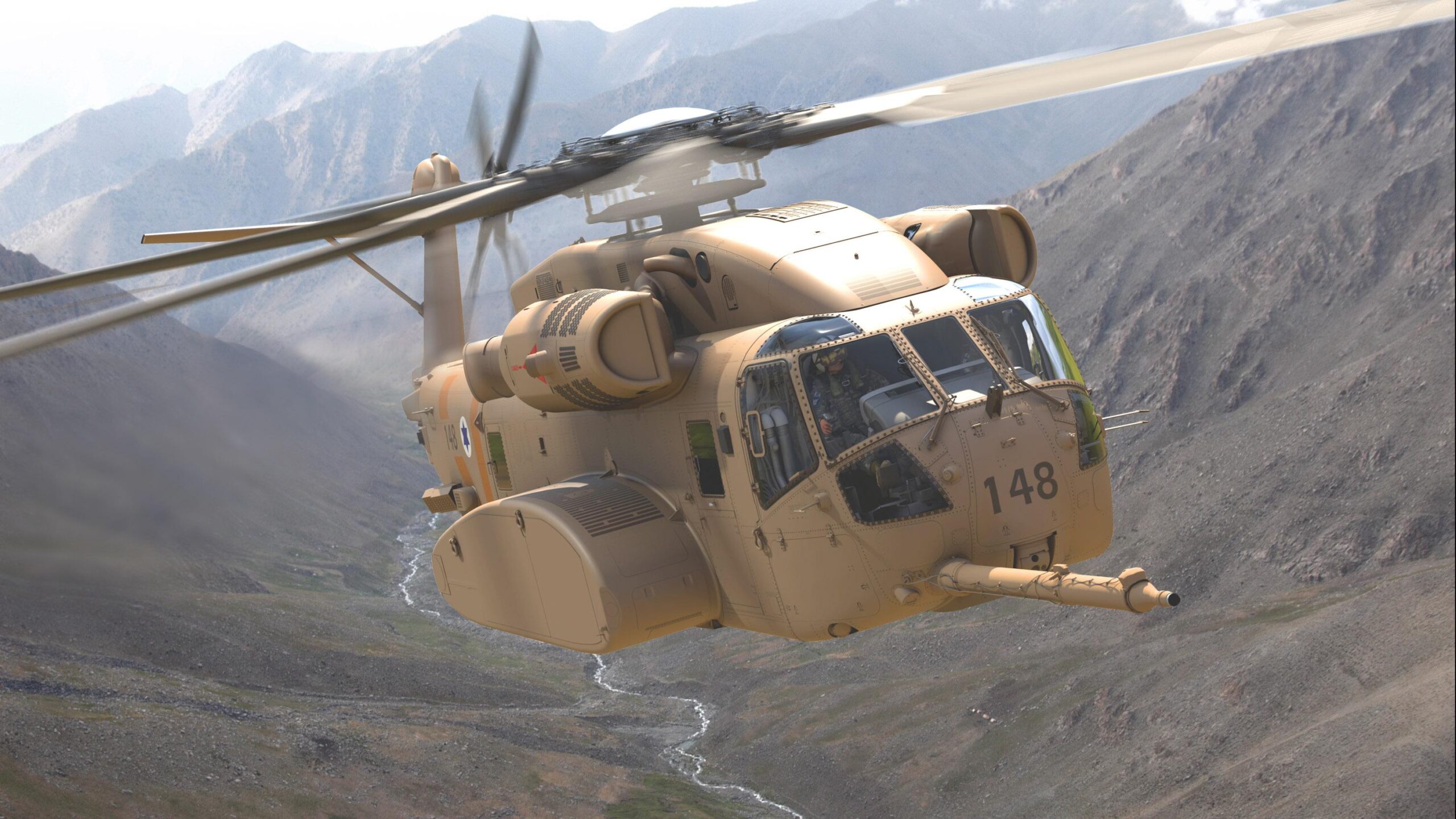
It’s been two years since the King Stallion earned its sea legs (landing gear?) aboard the USS Wasp. Lockheed insists that “only the K can.” Now we shall see.
Dan@thewarzone.com
